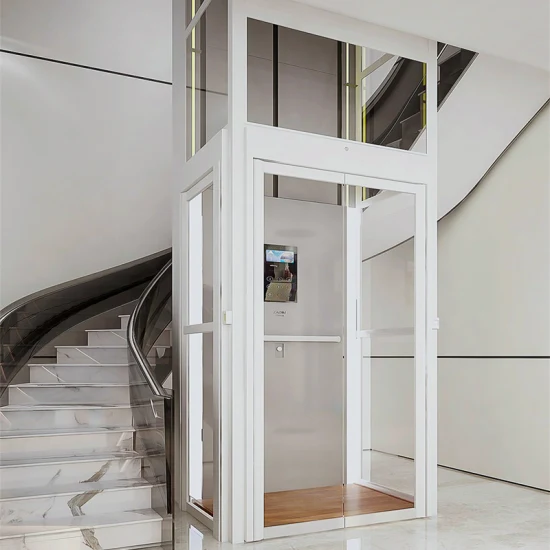Discover the very best Disabled Platform Lifts Prices UK for Residential and Commercial Use
Discover the very best Disabled Platform Lifts Prices UK for Residential and Commercial Use
Blog Article
Exploring the Globe of Elevators: Common Issues Dealt With by Various Lift Devices
As we browse via the vertical transport systems of contemporary buildings, lifts stand out as an indispensable part of our daily lives. From hydraulic lifts to traction systems and machine-room-less layouts, each lift kind comes with its set of common issues.
Hydraulic Elevators
Hydraulic lifts, typically chosen for low-rise structures, utilize fluid stress to control the motion of the lift auto (lift repair companies). This mechanism involves a hydraulic pump pushing oil right into a cylinder, causing the lift to move in the wanted direction. While hydraulic lifts are recognized for their smooth and quiet procedure, they do include their own set of common concerns
One common issue with hydraulic lifts is oil leakage. The seals in the hydraulic system can break gradually, leading to oil seepage. This not just produces a mess however can additionally impact the lift's efficiency if left unaddressed. In addition, issues with the control system, such as damaged valves or a malfunctioning pump, can create disturbances in the elevator's motion.
Routine upkeep and prompt repair work are important to guarantee the smooth functioning of hydraulic elevators. By attending to these common concerns proactively, building proprietors can minimize downtime and guarantee the safety and security and performance of their vertical transportation system.
Traction Lifts
When thinking about vertical transportation systems in buildings, another typical type other than hydraulic elevators is the grip lift. Traction elevators run utilizing a system of ropes and weights that relocate the elevator vehicle by gripping onto the hoist ropes. This device enables smoother and faster vertical transportation compared to hydraulic systems.
Among the typical concerns dealt with by grip lifts is rope wear. The consistent activity of the ropes within the traction system can lead to tear and use in time, possibly causing the elevator to breakdown or end up being harmful for usage. Regular examinations and upkeep of the ropes are important to make sure the elevator's appropriate performance and safety.
An additional concern that grip lifts may encounter is associated to the control system. Issues with the control system can bring about concerns such as irregular activity, hold-ups in response times, or perhaps total shutdowns. Routine testing and upkeep of the control system are critical to stop such problems and guarantee the lift's reliability.
Machine-Room-Less (MRL) Lifts

Among the vital elements of MRL elevators is the compact gearless grip device that is mounted within the hoistway. This machine successfully drives the lift auto without the demand for bulky equipment located in standard traction elevators. In addition, MRL lifts usually utilize a weight system to balance the automobile, further boosting their power performance.
In spite of their advantages, MRL lifts might face challenges associated with repair and maintenance as a result of the confined area for tools setup. Accessibility for servicing components within the shaft can be restricted, requiring specialized training for service technicians. Proper upkeep schedules and normal examinations are essential to make certain the continued smooth procedure of MRL elevators.
Overloading and Weight Restriction Issues
Straining and weight restriction concerns are vital problems in lift procedures. Lift producers design lifts with specific weight abilities to ensure passenger safety and devices longevity.
When lifts are overloaded, it puts too much stress on the visit homepage motor, cable televisions, and other components, potentially causing malfunctions or breakdowns. If they identify excess weight, recommended you read security mechanisms such as sensing units and overload sensing units are in area to avoid lifts from moving. Furthermore, exceeding weight limits can cause enhanced energy intake and wear and tear on the elevator system.
To reduce straining issues, developing supervisors need to plainly present weight limitations in lifts and enlighten occupants on the relevance of adhering to these restrictions - lift repair companies. Routine upkeep checks by qualified service technicians can additionally help make certain that lifts are operating within risk-free weight specifications. By attending to overloading and weight limit problems proactively, building owners can boost elevator safety and security and effectiveness
Electric System Failures
Surpassing weight limitations in lifts can not only lead to mechanical issues but also potentially contribute to electrical system failures within the lift infrastructure. Electrical system failings are a vital concern in lift operation, as they can trigger unforeseen shutdowns, malfunctions, or even safety dangers.
Routine maintenance and examinations are vital to determine and address possible electrical concerns promptly, ensuring the risk-free helpful hints and efficient procedure of elevator systems. By adhering to weight restrictions and carrying out routine electric system checks, building owners can mitigate the danger of electric failures in elevators.
Conclusion

Hydraulic lifts, often preferred for low-rise buildings, make use of fluid stress to manage the motion of the elevator car.When considering upright transport systems in buildings, one more typical type apart from hydraulic elevators is the grip elevator. Traction lifts run using a system of ropes and counterweights that relocate the elevator automobile by gripping onto the hoist ropes. Unlike typical elevators that call for a separate equipment space to house the tools, MRL lifts incorporate most of the parts within the shaft, getting rid of the need for a dedicated equipment space.In conclusion, lifts deal with usual problems such as hydraulic malfunctions, grip system failures, and electric system troubles.
Report this page